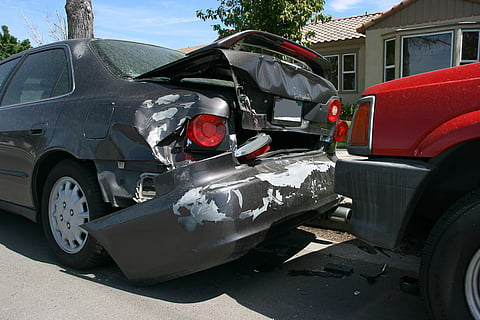Rear-End Collisions: Why Do They Still Happen and What Can Be Done About It?
Rear-end collisions are among the most common types of car accidents, often resulting in injuries and significant property damage. Despite advancements in vehicle safety and awareness campaigns, these incidents continue to occur at alarming rates.
Understanding the causes of rear-end accidents is crucial for drivers to take proactive measures to avoid them. In this article, we’ll explore the primary reasons behind rear-end collisions and discuss effective strategies to mitigate their occurrence.
Understanding rear-end collisions
Rear-end collisions happen when one vehicle crashes into the back of another. While they may seem minor compared to other types of accidents, the impact can lead to severe injuries, especially for passengers in the struck vehicle.
Common causes of rear-end accidents
Distracted driving
Distracted driving remains one of the leading causes of rear-end accidents. Activities such as texting, using a GPS, or even talking to passengers can divert attention from the road.
Statistics: A study by the Virginia Tech Transportation Institute found that texting while driving increases the risk of a crash by 23 times.
Tailgating
Following too closely is another significant factor in rear-end collisions. When drivers tailgate, they reduce their reaction time, making it difficult to stop in time if the vehicle ahead suddenly brakes.
Recommendation: Maintaining a safe following distance of at least three seconds can help prevent these types of accidents.
Sudden stops
Unexpected stops, whether due to traffic signals, obstacles, or other drivers’ actions, can lead to rear-end collisions. Drivers who are not paying attention may not react quickly enough to avoid a crash.
Example: In heavy traffic, sudden stops are frequent, and without proper distance, a rear-end accident can easily occur.
Weather conditions
Inclement weather, such as rain, snow, or fog, can reduce visibility and road traction, increasing the likelihood of rear-end collisions. Slippery roads may lead to longer stopping distances.
Advice: In poor weather conditions, it’s advisable to drive at reduced speeds and maintain greater distance from other vehicles.
Impaired driving
Driving under the influence of alcohol or drugs impairs judgment and reaction times, significantly increasing the risk of rear-end accidents.
Data: About 32% of all traffic-related deaths involve alcohol.
Prevention measures to reduce rear-end collisions
Awareness and proactive measures can significantly reduce the incidence of rear-end collisions. Here are some effective strategies:
1. Stay focused on the road
Eliminating distractions is critical for safe driving. Here are some ways to stay focused:
Limit phone use: Consider using hands-free devices or apps that minimize distractions while driving.
Avoid eating or drinking: These activities can take your attention away from the road.
2. Maintain safe following distances
Adopting the three-second rule helps ensure you have enough time to react. This distance can be increased in adverse weather conditions.
3. Use turn signals
Always signal your intentions to change lanes or turn. This alerts drivers behind you and allows them to react accordingly.
4. Be aware of your surroundings
Keep an eye on traffic patterns and the behavior of other drivers. If you notice a driver acting erratically, adjust your speed or position to maintain a safe distance.
5. Invest in safety features
Modern vehicles often come equipped with safety features like automatic emergency braking and adaptive cruise control. Utilizing these technologies can enhance safety and reduce the risk of collisions.
Conclusion
Rear-end collisions remain a persistent issue on our roads, but understanding the causes of rear-end accidents and implementing preventive measures can significantly reduce their occurrence. By staying focused, maintaining safe distances, and being aware of your surroundings, you can contribute to safer driving conditions for everyone.
Inspired by what you read?
Get more stories like this—plus exclusive guides and resident recommendations—delivered to your inbox. Subscribe to our exclusive newsletter
Resident may include affiliate links or sponsored content in our features. These partnerships support our publication and allow us to continue sharing stories and recommendations with our readers.

